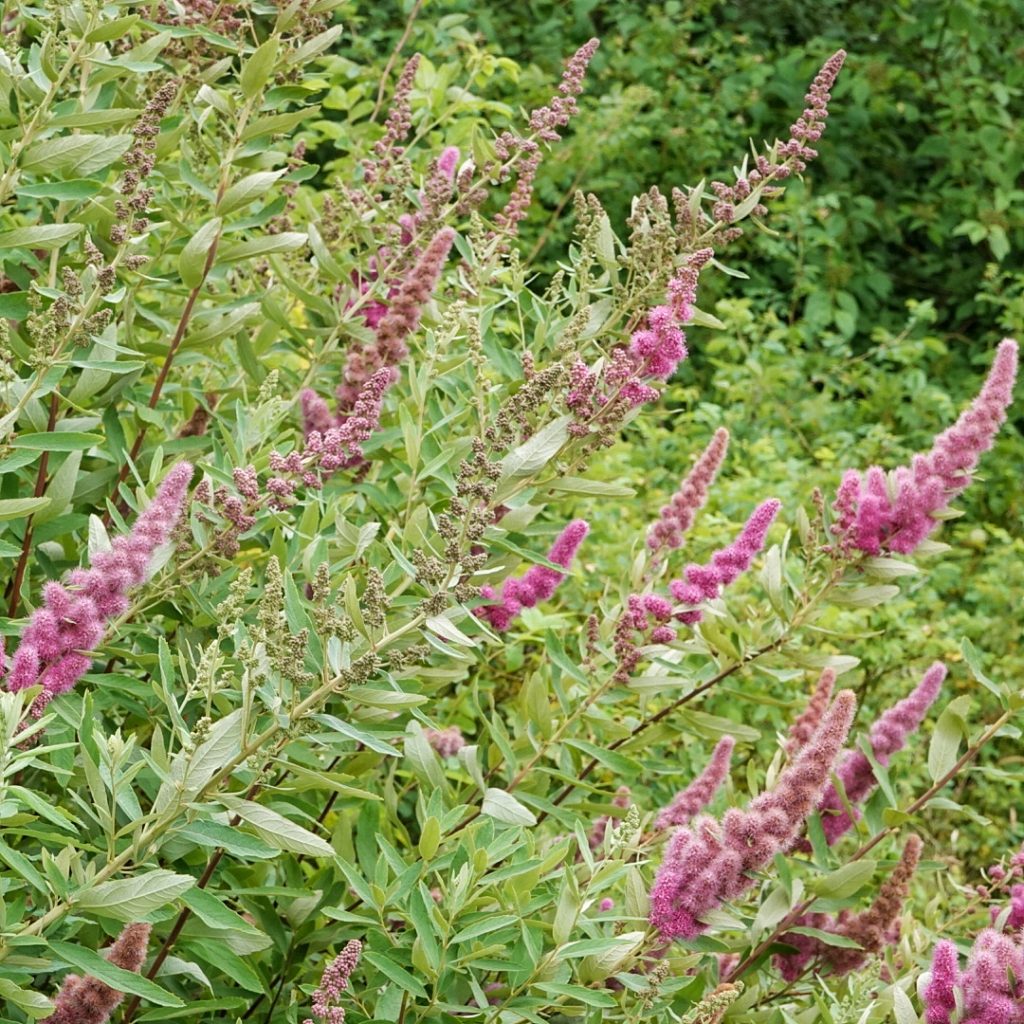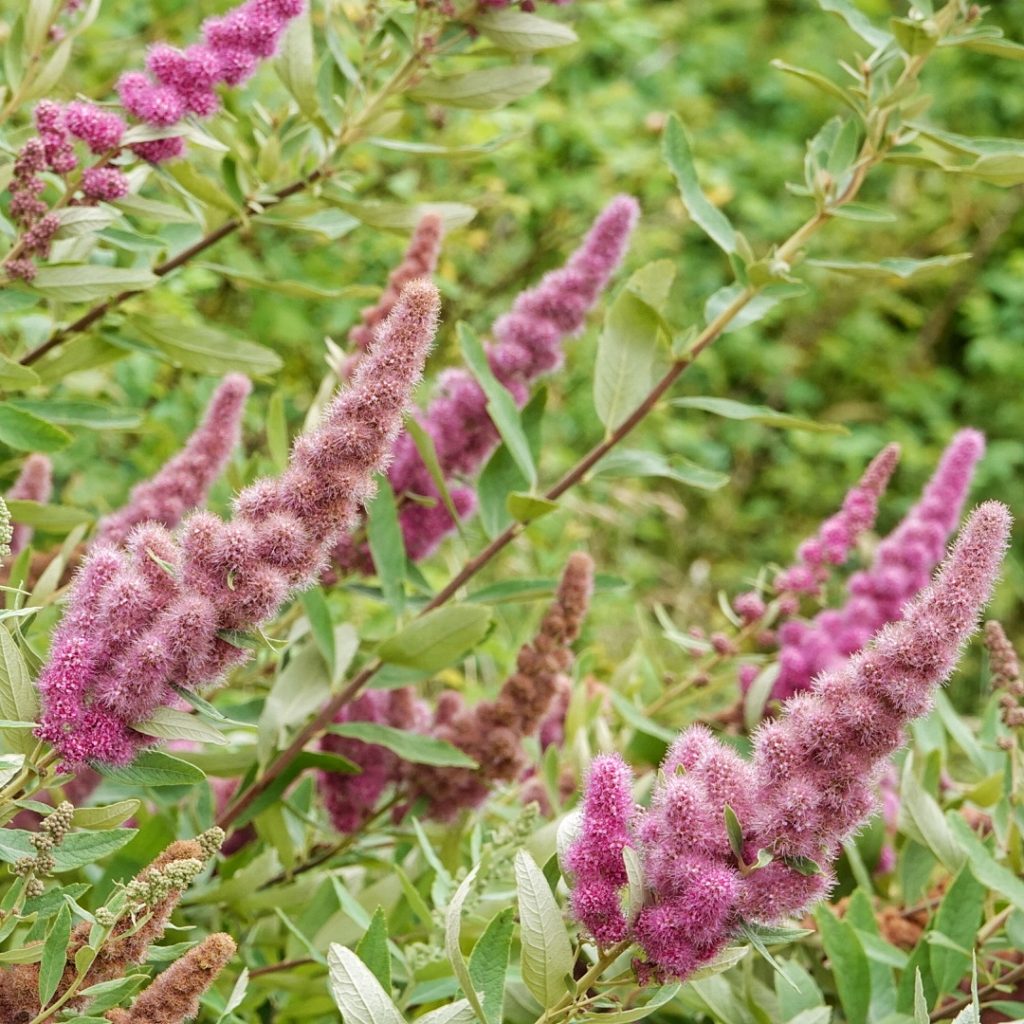
This beautiful member of the rose family has many common names, including western hardhack, Douglas’ spiraea, steeplebush, and western, pink or rose spiraea. Spiraea sp. in general go by the common name of meadowsweets. Spiraea douglasii hybridizes easily with both S. splendens and S. lucida where their ranges overlap, making identification in those areas a little trickier.
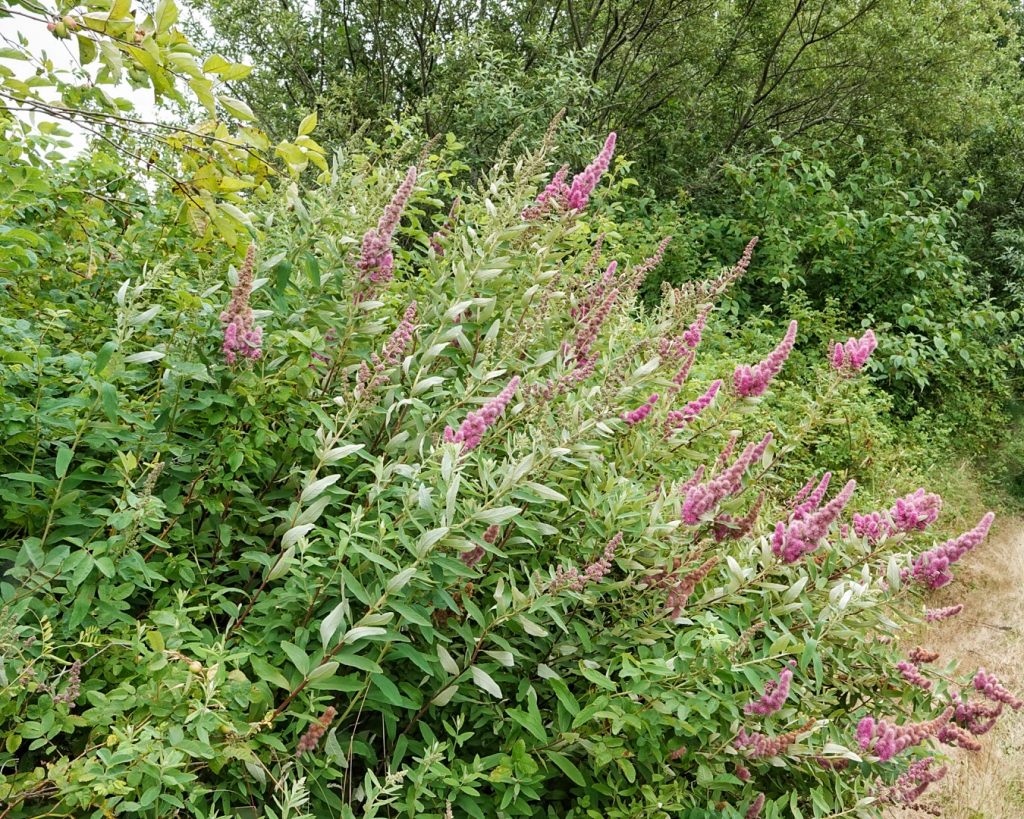
Though this plant provides a great deal of food for wildlife, it seems that it didn’t do the same for indigenous peoples. But it did have many utilitarian purposes, being used to make brooms, racks for drying and cooking salmon, and as skewers for cooking clams. And the seeds were used medicinally to treat diarrhea.
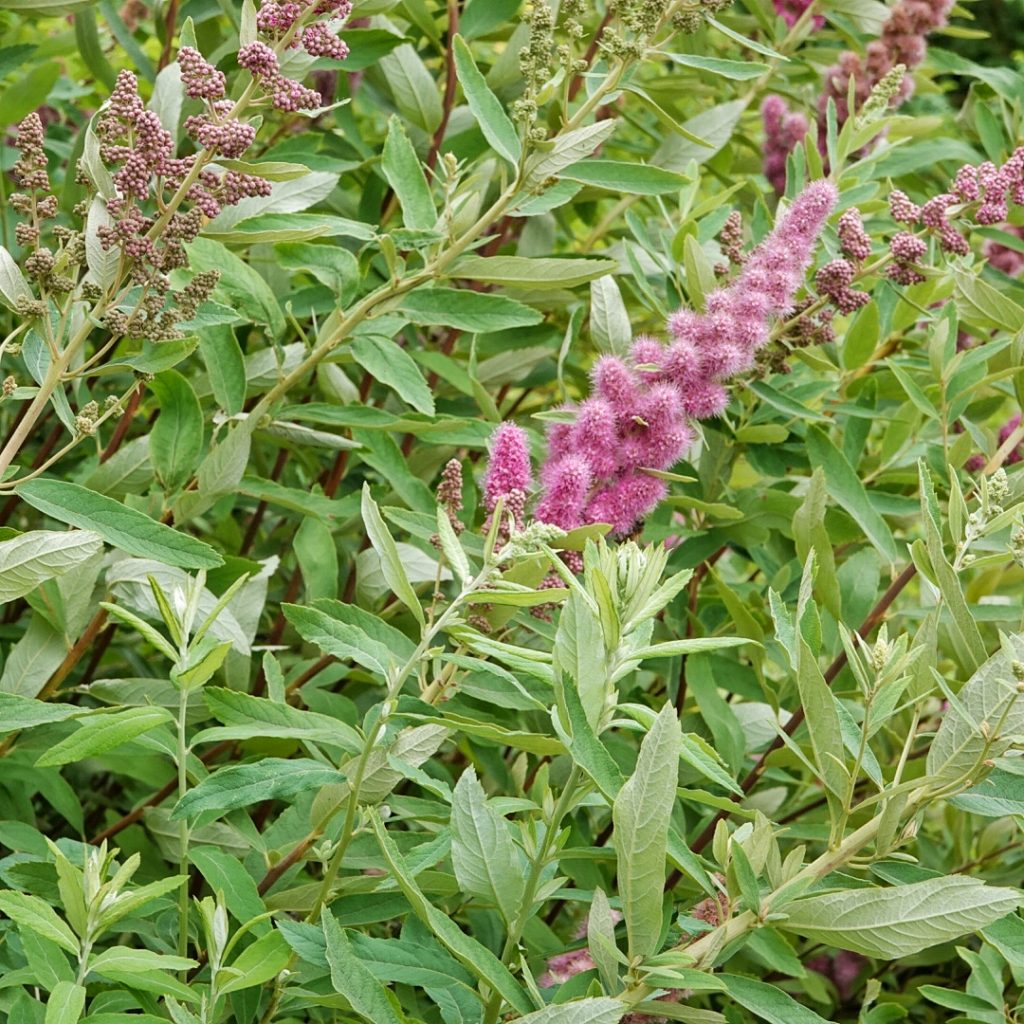
Beyond the number of wildlife which it feeds it also has great ecological value as cover for small birds and wildlife, and it stabilizes banks and prevents erosion around waterways. And anyone who wonders why it’s called western hardhack should try bushwhacking through a stand of this stuff. Even with a sharp machete it is slow going and very hard work!
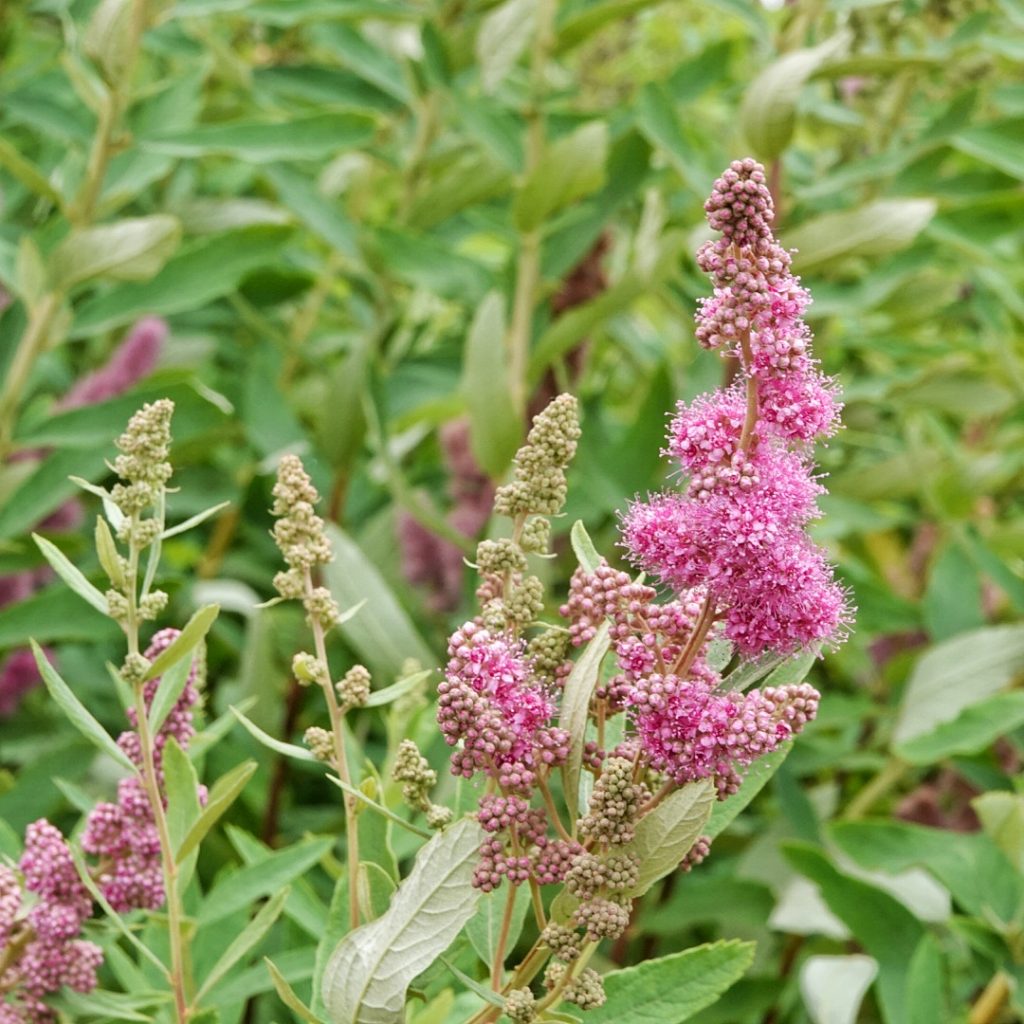
Description-Fairly large (up to 6’ tall) perennial shrub with multiple stems and branches and forming dense thickets; leaves alternate, up to 4” long, oblong to oval on a short stem, serrated on upper half,dark green dorsally, slightly lighter below; tiny flowers pink to purple, inflorescence 2-4 times as tall as wide.
Similar species–S. splendens has smaller, egg-shaped leaves, and the inflorescence is more of a ball and is usually as wide as tall; other Spiraea sp. have white to light pink flowers.
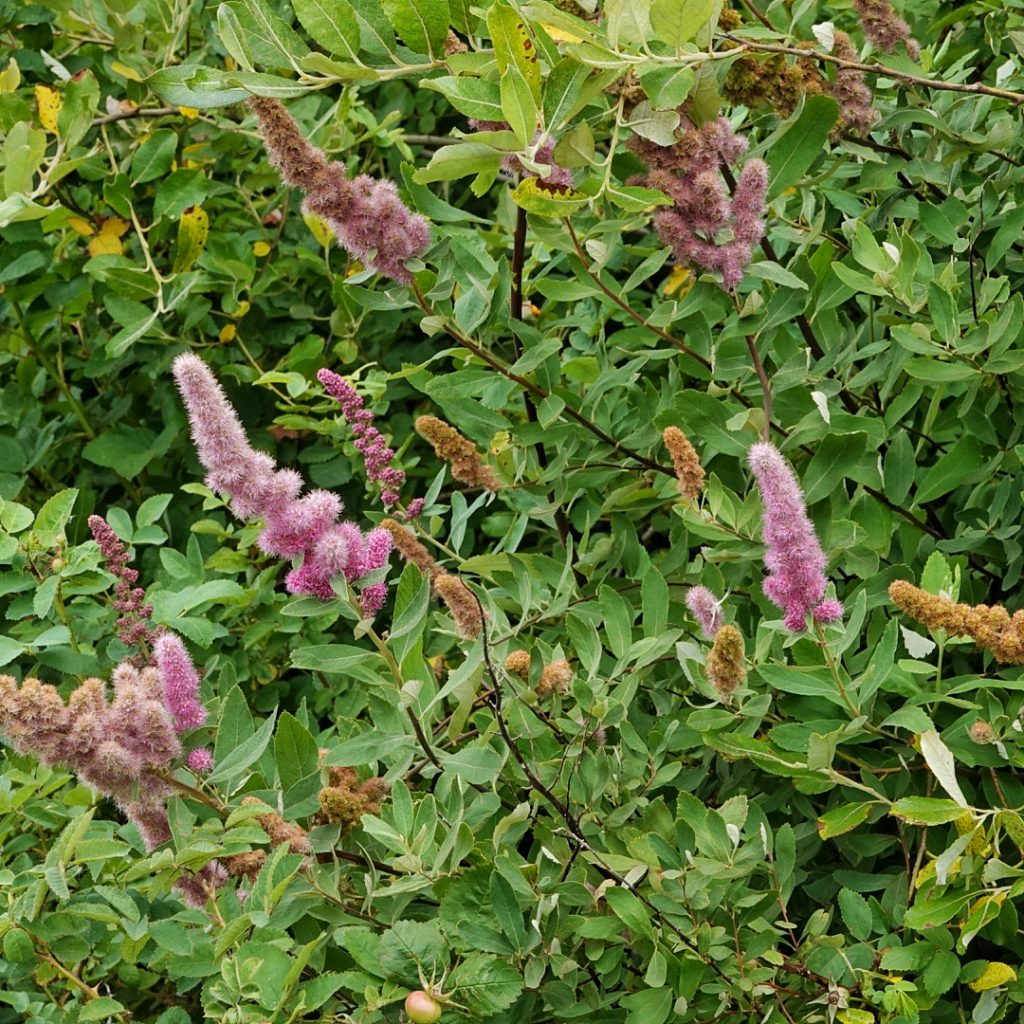
Habitat-Wetlands, swamps, wet meadows, lakeshores and along slow moving riparian corridors, from sea level to subalpine.
Range-Western North America; primarily west of the Cascades in our region, but also found occasionally in damp forested areas on the eastside and in Idaho and Montana;
Reproductive timing-Blooms June through August depending on elevation.
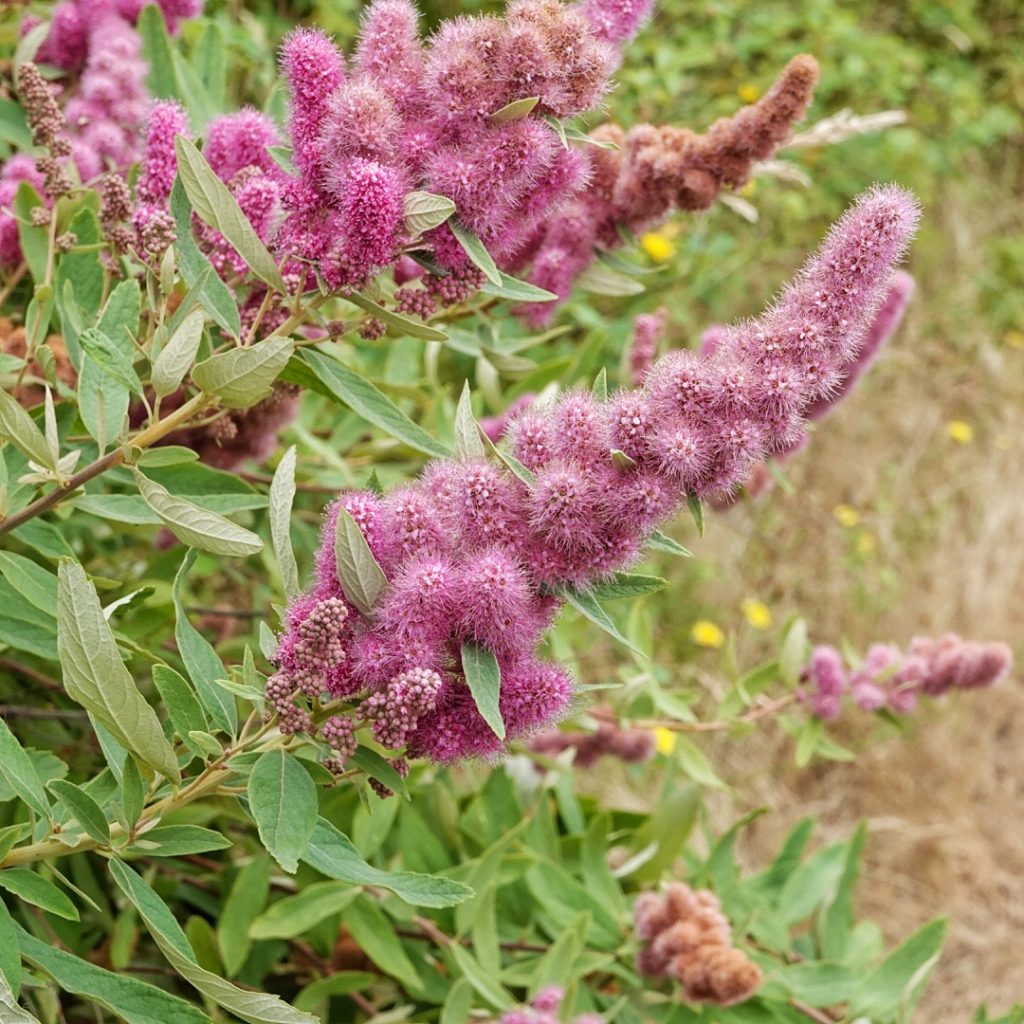
Eaten by-Used as a larval host by the Geometrid moths Eulithis xylina, Eupithecia misturata, and Sabulodes aegrotata, the Noctuid moths Egira crucialis, Lithophane georgii, Lithophane thaxteri, Oncocnemis chalybdis, Orthosia praeses, Xylena cineritia and Alypia langtoni, the leaf beetle Tricholochmaea spiraeophila (and probably others since many are spirea specialists), and the leaf mining flies Agromyza spiraeoidearum and Parornix spiraeifoliella; a wide variety of Hymenoptera, Lepidoptera, Diptera, and Coleoptera feed on the nectar and pollen; deer, elk, and other herbivores browse the plant; and the dried seeds are eaten by grouse and other birds.

Etymology of names–Spiraea is from the Greek for coiled/wreath, possibly due to similarity to a plant the Greeks used for garlands, though the reference is obscure. The specific epithet douglasii honors the Scottish botanist David Douglas.
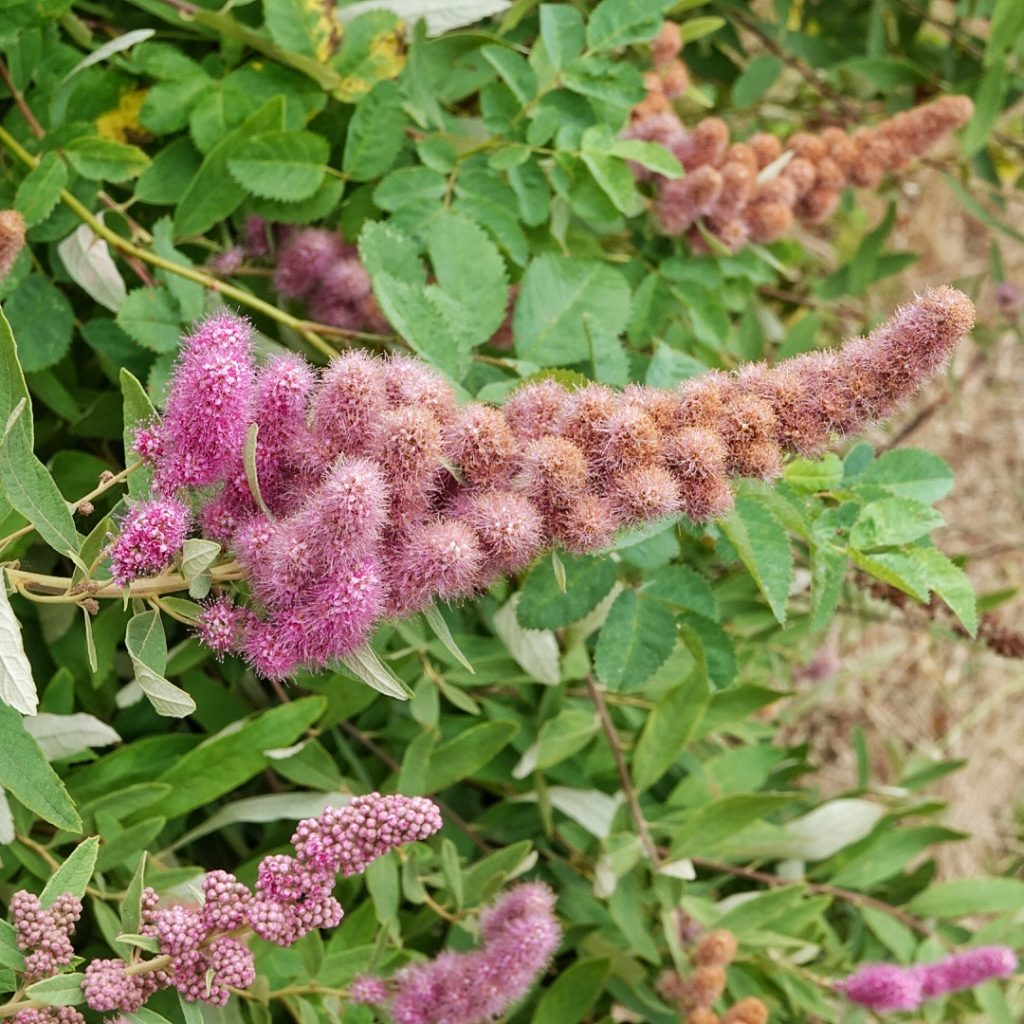
http://nativeplantspnw.com/douglas-spiraea-spiraea-douglasii/
http://www.efloras.org/florataxon.aspx?flora_id=1&taxon_id=242417311
BRIT – Native American Ethnobotany Database
https://calscape.org/Spiraea-douglasii-()
https://landscapeplants.oregonstate.edu/plants/spiraea-douglasii
https://www.beavertonoregon.gov/1963/Douglas-Spirea
